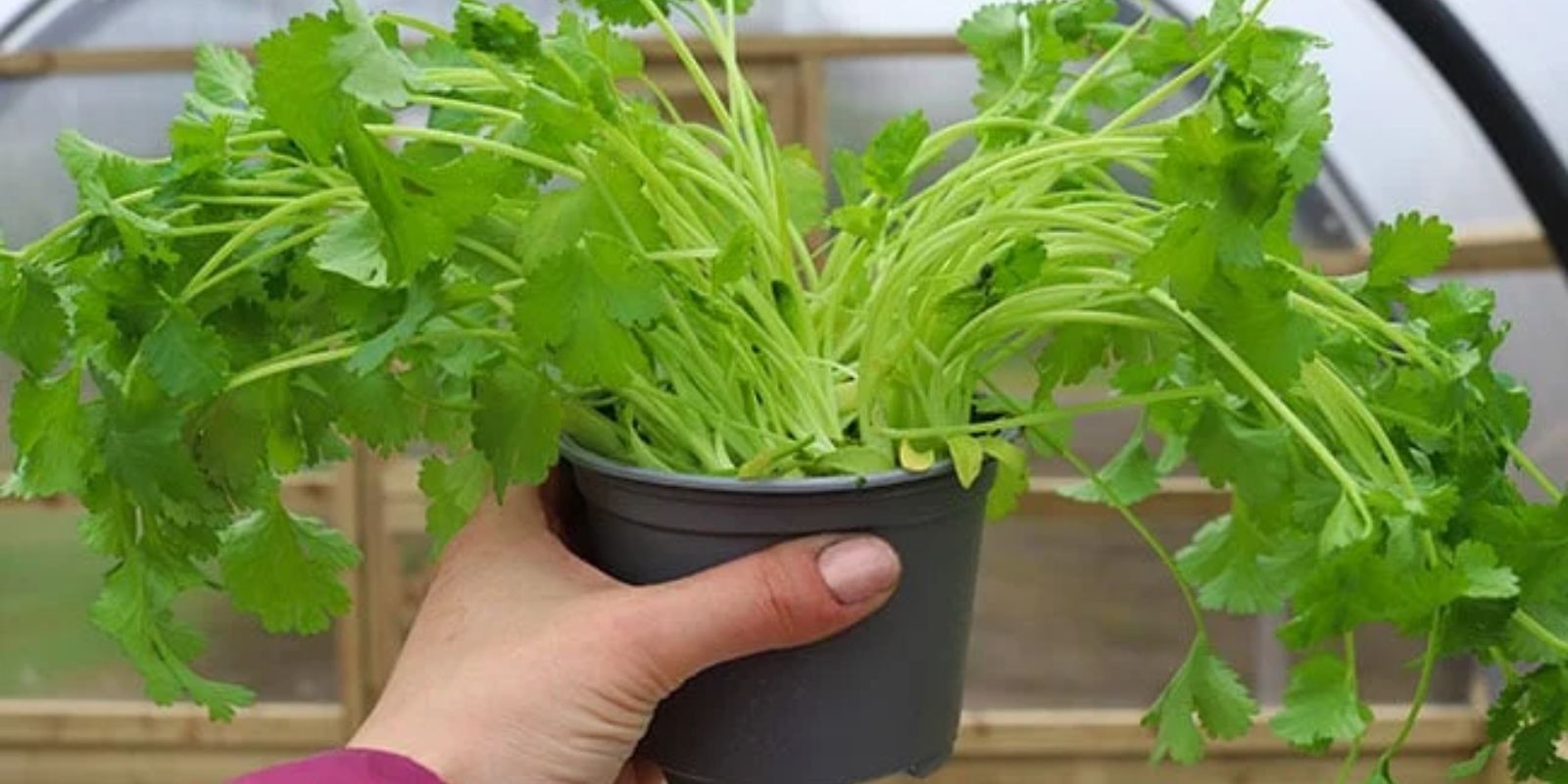Cilantro, also known as coriander, is a staple herb in many cuisines worldwide. Its fresh, vibrant flavor can elevate dishes from salsa to soups, making it a favorite among home cooks. If you’re short on garden space or want a fresh supply of cilantro at your fingertips, growing it in containers is a fantastic option. This comprehensive guide will walk you through everything you need to know about growing cilantro in containers, from choosing the right setup to harvesting and caring for your plants.
Why Grow Cilantro in Containers?
Growing cilantro in containers offers several advantages:
- Space Efficiency: Perfect for those with limited garden space, such as apartment dwellers or those with small yards.
- Accessibility: Keeps fresh cilantro close at hand, making it easy to add to your meals.
- Flexibility: Allows for easy movement to optimize light exposure and protect from harsh weather.
By growing cilantro in containers, you can enjoy a steady supply of this versatile herb throughout the year, regardless of your gardening space.
Step 1: Choosing the Right Container
Selecting the appropriate container is crucial for successful cilantro cultivation. Consider the following factors:
- Size: Choose a container that is at least 6-8 inches deep to accommodate cilantro’s root system. A larger container allows for more robust growth, but a smaller one can also be effective.
- Drainage: Ensure the container has drainage holes to prevent water from accumulating at the bottom. Proper drainage is essential to avoid root rot and maintain healthy plants.
Containers made from plastic, clay, or ceramic can all work well. Just ensure they are suitable for your growing environment and have adequate drainage.
Step 2: Preparing the Soil
Cilantro thrives in well-draining soil that is rich in organic matter. Follow these steps to prepare the ideal soil mix:
- Potting Mix: Use a high-quality potting mix designed for container gardening. Avoid garden soil, which can be too heavy and may not drain well.
- Soil Amendments: Enrich the potting mix with compost or well-rotted manure. This improves soil fertility and helps retain moisture without becoming waterlogged.
The ideal soil pH for cilantro is between 6.2 and 6.8. A slightly acidic to neutral pH ensures optimal nutrient availability for your plants.
Step 3: Planting Cilantro Seeds
Sowing cilantro seeds directly into the container is the most effective method. Here’s how to do it:
- Sow Seeds: Scatter cilantro seeds evenly across the surface of the soil. Space seeds about 1 inch apart. Cilantro seeds can be quite large, so you may need to adjust spacing accordingly.
- Cover Seeds: Lightly cover the seeds with a thin layer of soil or potting mix. This helps keep them in place and promotes germination.
- Water Gently: Water the seeds gently to moisten the soil. Avoid overwatering, as this can lead to seed rot.
Cilantro seeds typically germinate within 7-14 days. Keep the soil consistently moist but not waterlogged during this period.
Step 4: Providing Adequate Light
Cilantro requires plenty of light to grow well. Here’s how to ensure your plants get the light they need:
- Sunlight: Place the container in a location that receives 4-6 hours of direct sunlight daily. A sunny windowsill or a spot on a balcony can be ideal.
- Indoor Lighting: If growing cilantro indoors with limited natural light, consider using fluorescent or LED grow lights. Position the lights close to the plants to mimic natural sunlight.
Regular light exposure encourages healthy, bushy growth and prevents the plants from becoming leggy.
Step 5: Watering and Care
Maintaining the right moisture levels and general care are crucial for cilantro’s health:
- Watering: Water the cilantro when the top inch of soil feels dry. Cilantro prefers consistently moist soil but dislikes sitting in water. Ensure the container’s drainage holes are functioning properly.
- Fertilizing: Cilantro generally does not require heavy fertilization. If the soil is rich in compost, additional feeding is usually unnecessary. However, you can apply a balanced, water-soluble fertilizer every 4-6 weeks if needed.
Regularly check for pests and diseases. Cilantro can be susceptible to aphids and fungal issues, so monitor your plants and address any problems promptly.
Step 6: Harvesting Cilantro
Harvesting cilantro is straightforward and can help promote continued growth:
- Timing: Begin harvesting leaves when the plants are about 6 inches tall. This allows the plants to establish themselves while still providing ample foliage.
- Method: Cut leaves from the outer parts of the plant using clean, sharp scissors. Avoid cutting too close to the base to allow the plant to continue growing.
- Frequency: Regular harvesting encourages new leaf production. Harvest cilantro every couple of weeks or as needed for your culinary use.
Cilantro has a tendency to bolt (flower and go to seed) in hot weather or when it becomes too crowded. To extend the harvest period, consider growing cilantro in cooler seasons or providing some shade during the hottest parts of the day.
Step 7: Managing Cilantro’s Lifecycle
Cilantro is a short-lived herb that typically completes its lifecycle within a few months. Here’s how to manage its lifecycle effectively:
- Replanting: Cilantro grows best in cool weather. In warmer climates, consider replanting cilantro every few weeks to ensure a continuous supply. Rotate crops to avoid soil depletion.
- Saving Seeds: If your cilantro bolts and goes to seed, you can save seeds for future planting. Allow the seed heads to dry on the plant, then collect and store seeds in a cool, dry place.
Conclusion
Growing cilantro in containers is an excellent way to enjoy fresh, flavorful herbs right at home, regardless of your space constraints. By following these steps—choosing the right container, preparing the soil, planting seeds, providing adequate light, watering and caring for your plants, and harvesting—you can cultivate a thriving cilantro garden that enhances your meals and adds beauty to your living space.
Embrace the joy of home gardening and elevate your culinary creations with homegrown cilantro. Happy gardening!

